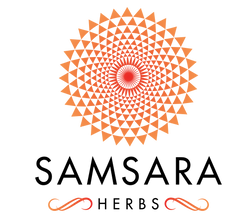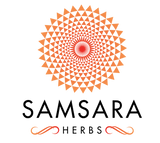Why you should have heard about Biofilms

Let's start off with the bad kind of bacteria in our bodies. Bacterial infections can be broadly classified as acute infections and chronic infections. Bacteria are also found in two life forms during their growth and reproduction.
- In the first form, bacteria can be found in the form of single independent cells in acute infections- in this case, they can be successfully treated with antibiotics. Examples of acute infections include a sore throat or food poisoning.
- In the second form, bacteria are organized in special aggregates called biofilms. This form is characteristic of chronic infections. In these cases, antibiotics are often ineffective because these bacterial biofilms are extremely resistant to antibiotics. Furthermore, these biofilm-based infections can also escape the immune system surveillance which naturally protects us from infections. Examples of chronic infections include Lyme disease, chronic middle ear infections, chronic wounds, catheter-associated infections, bacterial vaginosis, dental plaques and more. These chronic infections affect millions of people in the developed world each and every year, and many people suffer or worst-case even die as a result.

This relates to Lyme Disease. How?
Lyme disease is caused by four main species of bacteria: Borrelia burgdorferi and Borrelia mayonii are more likely to cause Lyme disease in the US, while in Europe and Asia- Borrelia afzelii and Borrelia garinii are more common. This disease is transmitted by the bite of an infected deer tick. These bacteria create biofilms and can cause chronic, long term problems.
Early signs and symptoms of Lyme disease include a rash that can be associated with fever, chills, fatigue, body aches, headache, neck stiffness, and swollen lymph nodes. These early signs and symptoms usually develop within a month after you have been infected. If left untreated, Lyme disease becomes chronic and many other symptoms and diseases can develop. The rash may develop in other parts of the body. Severe joint pains (especially affecting the knees) can be experienced as well. Lyme disease can also affect the brain weeks, months- and even years after the initial infection. In this case, a person can experience extreme fatigue, severe headache, meningitis (inflammation of the membranes surrounding the brain), Bell’s palsy, numbness or weakness of the limbs, and impaired muscle function. Less common, but possible symptoms of Lyme infection include heart complications, eye complications, as well as liver inflammation and damage.
Lyme Disease and Bacterial Biofilm
In a 2018 study, researchers observed that the antibiotic resistance and the recurrence of Lyme disease are linked with these biofilm-like aggregates of the bacteria. These biofilms are particularly problematic when Lyme disease affects the brain, a condition called Lyme neuroborreliosis. This is the most dangerous manifestation of Lyme disease, occurring in 10–15% of infected individuals. Lyme neuroborreliosis can be misdiagnosed with stroke, multiple sclerosis and other brain conditions.

Tips To Prevent and Manage Chronic Lyme Disease
Since these bacterial biofilms correlate with chronic Lyme disease and are highly resistant to prescription antibiotics, you need to look into alternative options. Of course, prevention is always the best way to avoid symptoms and complications of tick bites. However, there are natural ways to manage the disease in case it develops, too.
- If you get a tick bite, make sure you remove the tick within 36-48 hours. Note that not all, but a minority of tick bites actually cause Lyme disease. However, the longer the tick stays attached to your skin, the greater your risk to develop the disease. Your risk of developing Lyme is very low if you have the tick removed within 36-48 hours.
- If you aren’t sure if you have been bitten by a deer tick or you have signs and symptoms suggesting Lyme disease - go see your doctor right away. The earlier you start treatment, the more likely the treatment will work. One more reason to see your doctor: ticks not only cause Lyme disease but can also cause other conditions such as babesiosis and Colorado tick fever.
- Use natural supplements. Research studies found that certain herbs have the ability to disrupt bacterial biofilms. Here are some of the best -all-natural- biofilm disruptors: Dokudami (medically known as Houttuynia cordata), Cat’s Claw (Uncaria tomentosa). Stevia Leaf Extract is best known as a natural sweetener, but there is also scientific evidence that it can reduce bacterial biofilm. You can also consider other herbs that help reduce inflammation, brain fog, fatigue associated with Lyme disease-for example Japanese knotweed (which is a good source of resveratrol), Andrographis Paniculata (also known as the Indian echinacea) and Sarsaparilla.
- Adopt a clean, healthy diet. Low carb diets such as Paleo and keto diet had been researched and are recommended by natural health experts to reduce inflammation and promote a healthy, strong immune system.

References
1 | https://www.ncbi.nlm.nih.gov/pubmed/23635385
2 | https://www.mayoclinic.org/diseases-conditions/lyme-disease/symptoms-causes/syc-20374651
3 | https://www.ncbi.nlm.nih.gov/pmc/articles/PMC5251276/
4 | https://www.ncbi.nlm.nih.gov/pmc/articles/PMC5251276/
5 | https://www.ncbi.nlm.nih.gov/pmc/articles/PMC4971593/
6 | https://www.ncbi.nlm.nih.gov/pmc/articles/PMC4030174/
7 | https://www.ncbi.nlm.nih.gov/pubmed/15254550
8 | https://www.ncbi.nlm.nih.gov/pmc/articles/PMC2367001/
9 | https://www.ncbi.nlm.nih.gov/pmc/articles/PMC4030174/
10 | https://www.ncbi.nlm.nih.gov/pmc/articles/PMC3351864/
11 | https://www.ncbi.nlm.nih.gov/pmc/articles/PMC4588085/
12 | https://www.ncbi.nlm.nih.gov/pmc/articles/PMC5662838/
13 | https://www.ncbi.nlm.nih.gov/pubmed/28657449
14 | https://www.ncbi.nlm.nih.gov/pubmed/30858121
15 | https://www.ncbi.nlm.nih.gov/pubmed/22322985
16 | https://www.ncbi.nlm.nih.gov/pubmed/28424024
17 | https://www.ncbi.nlm.nih.gov/pubmed/28676114
18 | https://www.ncbi.nlm.nih.gov/pmc/articles/PMC5661077/
19 | https://www.mdpi.com/1420-3049/18/5/5265
20 | https://www.ncbi.nlm.nih.gov/pubmed/21360003
21 | https://www.ncbi.nlm.nih.gov/pubmed/24388894
22 | https://www.ncbi.nlm.nih.gov/pubmed/31060239



